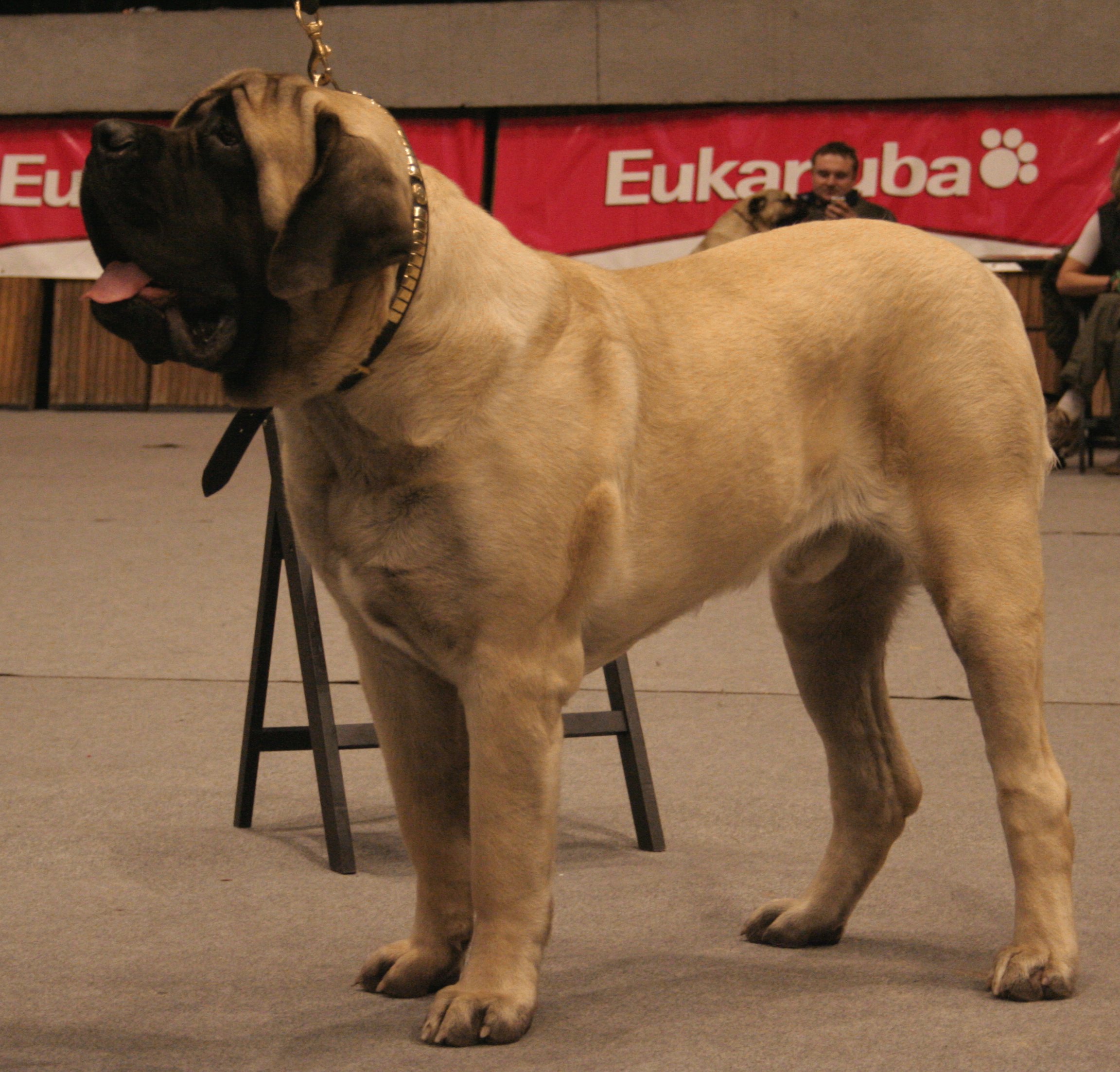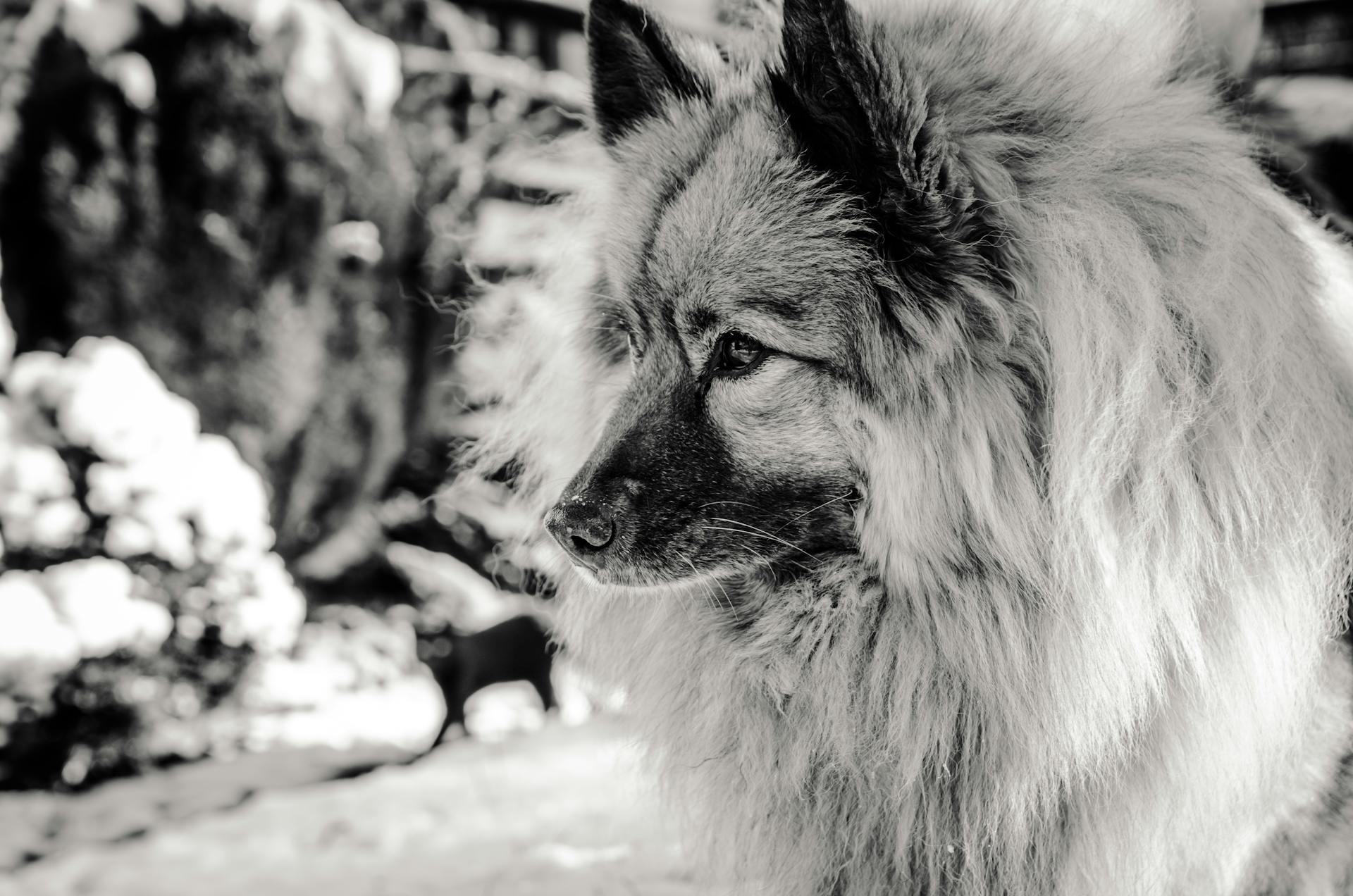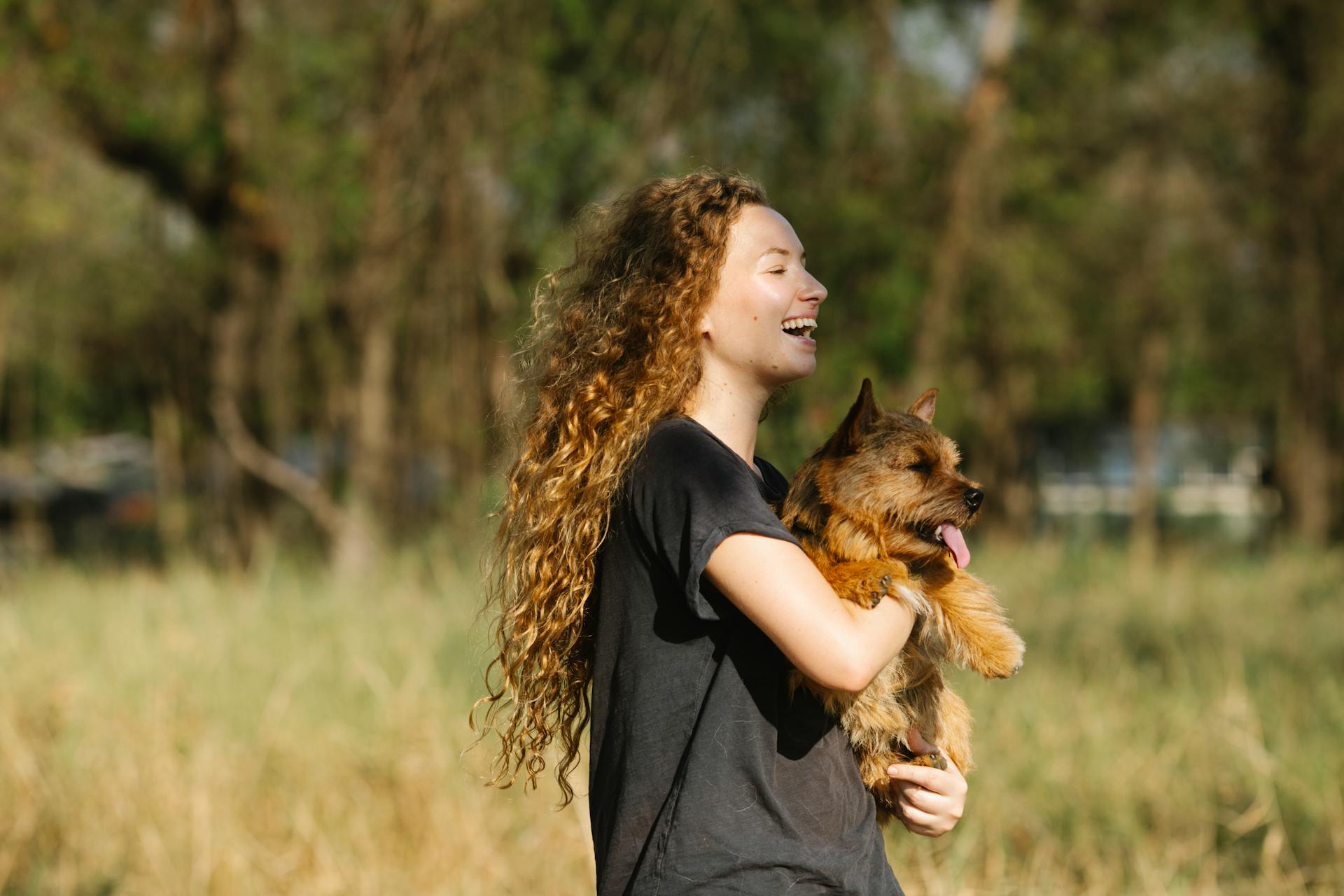
English Mastiff adults can be gentle giants, but they require careful consideration before bringing one home.
Their massive size is a major factor, with males weighing up to 230 pounds and standing as tall as 30 inches.
English Mastiffs are known for their short coats, which require minimal grooming but still need regular cleaning to prevent skin infections.
Their calm nature makes them a great fit for families with children, but they still need early socialization to ensure they grow into confident adults.
English Mastiffs are prone to health issues such as hip dysplasia and joint problems due to their massive size.
For more insights, see: Giant Breed Malamute
Care and Maintenance
English Mastiff adults need regular care and grooming to stay happy and healthy. They're not the most intelligent breed, but with some light obedience training, you can ensure they're safe and great companions.
Mastiffs require weekly brushing with a rubber hound glove to remove dead and loose hair. Daily brushing during their two shedding seasons will also help keep them looking their best.
Their short coats may not need much, but they can develop a strong "doggy" odor due to increased oil production. Regular brushing can help distribute these oils and prevent skin conditions.
You'll need to bathe your Mastiff slightly more often than other dogs, but be careful not to overdo it, as this can strip their skin of necessary oils. Consult with your vet or grooming specialist for advice on frequency and products.
Picking up after your Mastiff is a big job – literally! You'll need a pooper-scooper that can handle their large waste. They also drool a lot, so keep some drool rags handy.
On average, English Mastiff adults need 8 to 8 ½ cups of food per day, divided into two meals. Be careful not to overfeed, as this can lead to weight gain and bloat.
You might enjoy: 8 Week Old Yorkshire Terrier Puppy
Health and Nutrition
English Mastiff adults require a diet specifically formulated for large breeds to ensure they get the necessary nutrition. Choose a high-quality food and work with a veterinarian if you need guidance.
Adult English Mastiffs need 6-8 cups of dry food each day, split into two meals to prevent bloating and stomach torsion.
Mastiffs can be sloppy drinkers, so it's essential to provide clean, fresh water at different points of the day.
They are also prone to passing gas, so be prepared for that.
To prevent weight gain, monitor your English Mastiff's weight and discuss any concerns with your veterinarian. They can provide recommendations on diet and exercise to keep your dog healthy.
Here are some common health issues that can affect English Mastiffs:
- Gastric Torsion
- Hip Dysplasia
- Entropion
- Ectropion
- Elbow Dysplasia
- Progressive Retinal Atrophy
- Retinal Dysplasia
- Hypothyroidism
To identify potential health issues, your veterinarian may recommend the following tests:
- Eye Examination
- Hip
- Elbow
- Thyroid Tests
- X-Rays
Considerations
English mastiff adults can make wonderful pets, but it's essential to consider a few things before bringing one home. They're great with kids, earning a five out of five from the AKC, but they can be challenging with other dogs and strangers.
To ensure a smooth interaction, it's crucial to train and socialize them early on. This will help everyone feel safe around your pet.
Training mastiff adults requires gentle handling, lots of eye contact, and positive encouragement. Avoid raising your voice, as this can be counterproductive. Keep training sessions short and engaging to maintain their interest.
One thing to be prepared for is excessive drooling. Some owners keep wipes on hand to clean up their dog's face, their clothes, and those of their guests. If you're not comfortable with drool, an English mastiff might not be the best fit for you.
Special Considerations
Mastiffs can be great with kids, but they need early training and socialization to interact safely with others.
This breed requires gentle handling, so use lots of eye contact and positive encouragement during training, and keep your voice calm.
Training sessions should be short and interesting to keep your mastiff engaged.
Be prepared for lots of drool - some owners even keep wipes on hand to clean up after their pet.
It's essential to be comfortable with drool if you're considering a mastiff as a pet.
If you're not comfortable with slobber, you might want to consider a different breed.
Here are some key things to remember when handling your mastiff:
- Use gentle, calm movements
- Keep training sessions short and fun
- Be prepared for lots of drool
Cons of

If you're considering bringing a Mastiff into your life, there are some things to keep in mind.
One of the biggest cons of Mastiffs is that they drool quite a bit. It's not uncommon for them to leave puddles of slobber on your floors and furniture.
Their large tails can also cause damage, especially if you live in a small space. You'll need to make sure you have enough room for them to swing their tails without hitting anything.
Mastiffs are also heavy chewers, which means they'll need plenty of durable toys and chew treats to keep them occupied.
Here are some specific things to consider when it comes to Mastiff ownership:
- Drool quite a bit
- Large tails can cause damage and require extra space in your home
- Heavy chewers
Adopt or Buy
If you're considering bringing a mastiff into your life, you've got two main options: adopting or buying.
You can seek out a specialized breeder, but be prepared for a waiting list – puppies are generally available throughout the year.
A reputable breeder should have a history of healthy litters and be able to answer any questions you have about the pedigree, health, and history of the litter and parents.
Ideally, you should meet one or both parents to get a better sense of your future pet's personality, size, and temperament.
If you're interested in rescuing a mastiff, consider reaching out to organizations like The Mastiff Club of America, Mastiffs to Mutts Rescue Inc., or Southern States Mastiff Rescue.
Consider reading: Lancashire Heeler History
Size and Comparison
If you're considering an English Mastiff as a pet, it's essential to understand their size and how it compares to other breeds.
English Mastiffs are indeed one of the largest breeds around, but there are some similarly sized breeds you might find interesting.
The Spanish Mastiff is almost identical in size to the English Mastiff, with a similarity rating of 97%. This means they share many physical characteristics, including their massive size.
Here are some breeds that are similar in size to the English Mastiff:
- Spanish Mastiff: 97% Similar
- Neo Daniff: 92% Similar
- Golden Saint: 92% Similar
- American Mastiff: 92% Similar
- Weiler Dane: 91% Similar
These breeds are all quite large, so if you're looking for a similar companion to your English Mastiff, one of these might be a great fit.
Frequently Asked Questions
Is the English Mastiff a good family dog?
The English Mastiff can make a loving and loyal companion for families with older children, but may not be suitable for households with young toddlers due to its large size. With proper care and socialization, this breed can thrive in a family environment.
Is an English Mastiff aggressive?
English Mastiffs can exhibit aggression in some lines, but proper socialization can help ensure a stable temperament. However, their temperament can vary greatly, making socialization a crucial aspect of their development.
Featured Images: pexels.com


